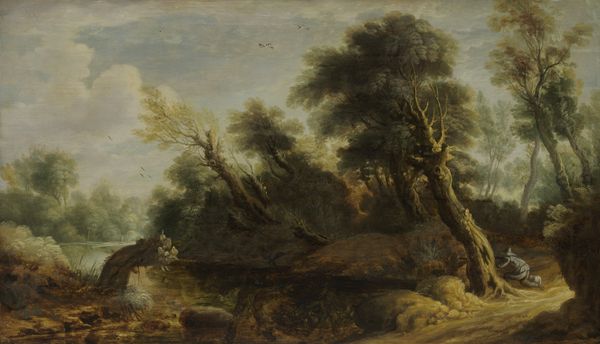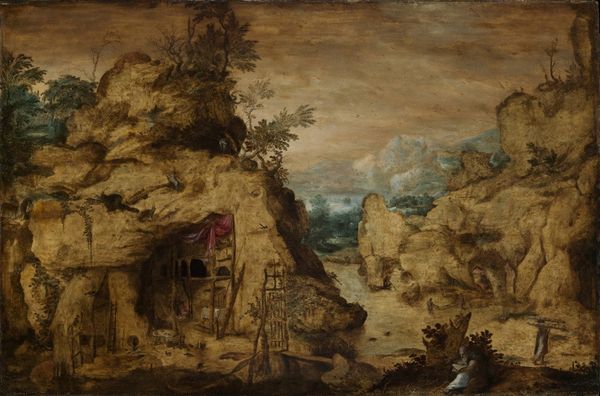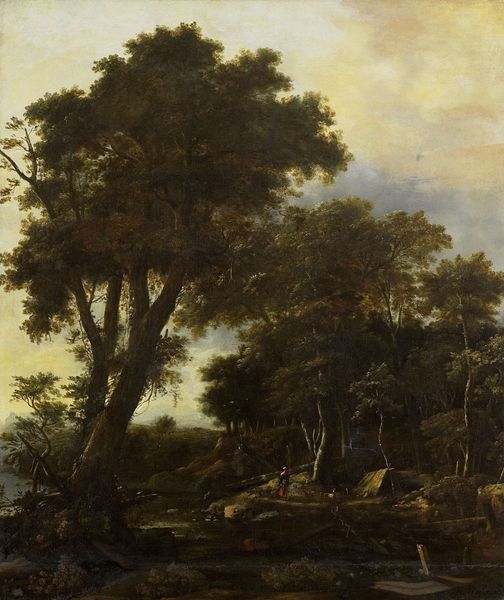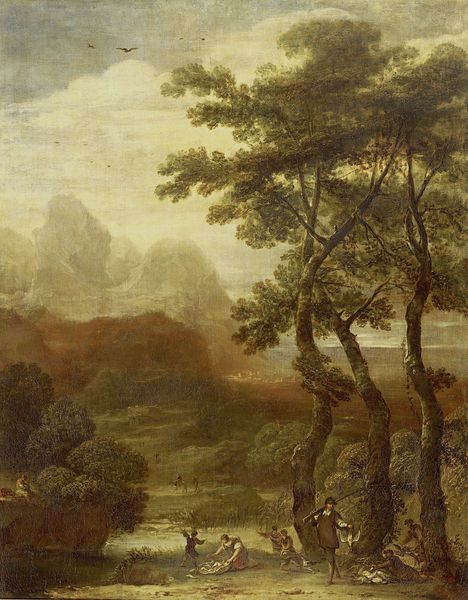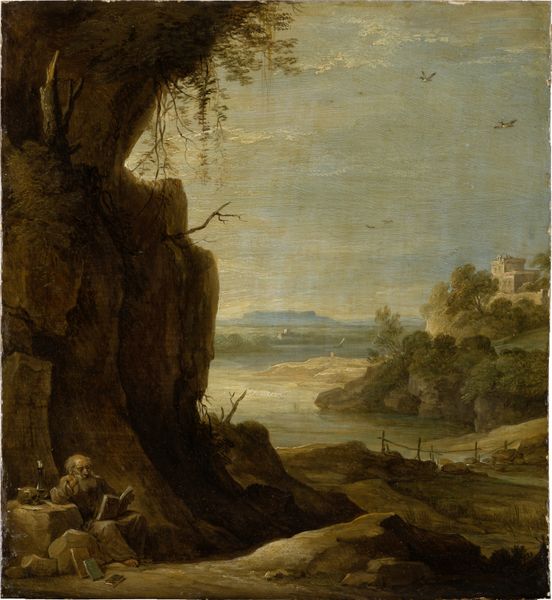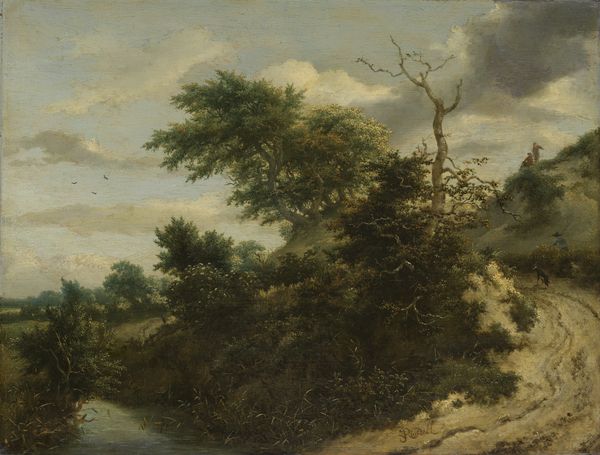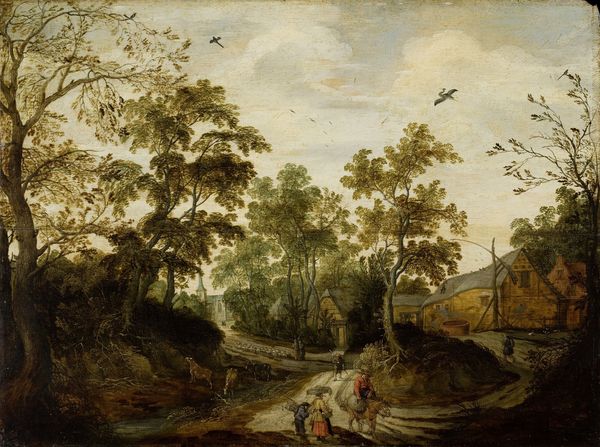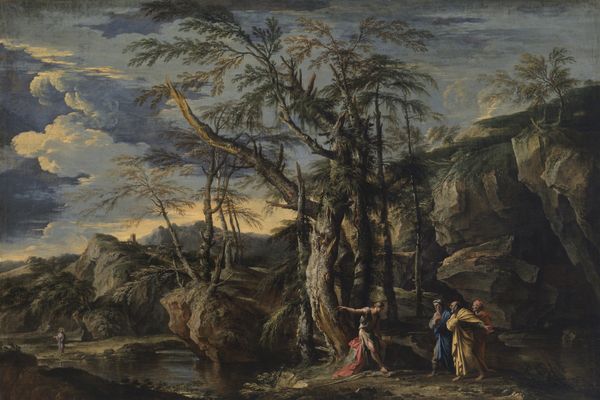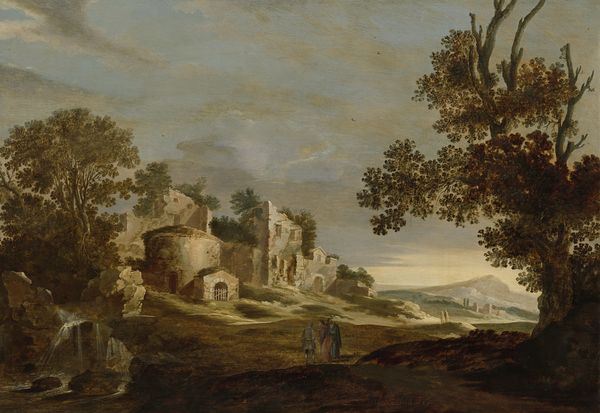
painting, oil-paint
#
baroque
#
dutch-golden-age
#
painting
#
oil-paint
#
landscape
#
figuration
#
oil painting
#
genre-painting
Dimensions: support height 17.7 cm, support width 26.5 cm
Copyright: Rijks Museum: Open Domain
Curator: This is Gillis Claesz. de Hondecoeter’s “Rocky Landscape with Deer and Goats,” an oil painting from around 1620. Editor: The earth tones create such a dense, tactile feel. I immediately notice the rocks—almost looming, overshadowing the delicate deer. Curator: Hondecoeter’s landscapes played a pivotal role in shaping Dutch Golden Age sensibilities. It moves from idealized to representations emphasizing national identity. This focus trickled down and shifted societal focus, too, as art became more accessible to different socioeconomic classes. Editor: Interesting, because I'm also drawn to the way he's built the surface of those rocks—the texture! It feels almost sculptural, especially compared to the softer treatment of the sky and foliage. I imagine he mixed quite a bit of medium into the oil paint, perhaps even adding some sand, or grinding down aggregate to produce this interesting layered quality. This would also affect production and value for Hondecoeter at the time, as access to materials dictated production scale. Curator: Well, that fabrication aligns with broader artistic trends where the means of representation were just as crucial as the subject. Landscapes were increasingly popular in the art market because they promoted civic and national pride. How an artist manipulates those values adds to an important cultural record. Editor: The painting’s scale and brushwork definitely reflect larger economic changes too, by impacting the experience. Were landscapes like this commonly commissioned pieces in the Netherlands, decorating domestic space? Curator: Definitely, they decorated bourgeois homes—embodying prosperity. Hondecoeter also signals societal changes. Look at the distant city. Not a medieval fortification, but the architecture of international commerce and burgeoning Dutch influence. Editor: Thinking about how these were produced, seen, and exchanged at this moment is vital to understanding our present relationship with art—the ongoing process. I'll never just see a pleasant scene after this! Curator: Exactly. It is more than meets the eye: the painting is a stage setting economic and societal pride in 17th-century Netherlands, a symbol that is not only aesthetic but represents an important historic development.
Comments
No comments
Be the first to comment and join the conversation on the ultimate creative platform.
